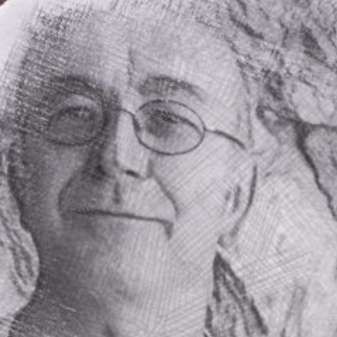What better start to a near capacity crowd concert than Mendelssohn's rousing Overture in C Major, Op101. It contains everything required to suggest a promising evening's music: pace, sparkling orchestration, energising counterpoint, dramatic dynamics and panache. The SCO used Christopher Hogwood's modern Urtext edition of this piece which, written in 1826 and revised in 1833, remained unpublished at the composer's death. The orchestration struck me particularly when, about two thirds of the way through, there is short and punchy section highlighting the woodwind section. This was bristling playing! Although the work is popularly known as the Trumpet Overture, this title is not on the original score and is slightly misleading as it is in no way a trumpet feature, apart from the fact that the trumpets top the fanfare-like theme which opens and closes the work.
It was a nice programming touch that the key of this piece was mirrored in closing with the Symphony No 1 in C major, Op. 21 (1800) by Beethoven. Conductor Andrew Manze had pointed out in some very humorous remarks that Beethoven had played with the audience by "not even beginning in the right key." In fact, the Adagio molto, which precedes the 1st Movement's Allegro con brio, opens on a chord of C7 - the chord most likely to drive the ears away from the key of C. This was quite an audacious move for a relatively recent arrival in Vienna in his début symphony. There is similar playfulness in the Finale: Adagio - Allegro molto e vivace, although this time rhythmic trickery involves the exact metre into which the scalic theme will eventually settle. In both cases the Manze and the SCO conveyed the charm and wit of these moments. In an intimate venue such as the Queen's Hall, one can see when an orchestra is really enjoying a performance and that sense of fun was wonderfully communicated to the audience.
Complementing Mendelssohn's C major, the first half moved to the relative minor for Schumann's Cello Concerto in A minor, Op. 129 (1850). Having heard a performance of his Piano Concerto (in the same key) the previous evening, is was interesting to hear, so soon after, songsmith Schumann's writing for a soaring, sustaining instrument. The soloist was the SCO's own David Watkin and he delivered an excellent performance. There is some notable high-wire work in this concerto, but in the hands of a composer such as Schumann there is always more to such writing than mere altitude. In the opening movement, Nicht zu schnell, beautiful harmonic surprises intensified these corners. Watkin navigated these moments with great feeling. Equally impressive in this concerto, and in this performance, were the impassioned moments in the cello's lower register. For obvious acoustical reasons not all composers are inclined to divide the drama between opposing ends of the pitch spectrum but, skilfully handled as it was here, it enriches the dramatic palate considerably. The response to this performance, from audience and orchestra alike, was so warm that Watkin rewarded us with a deeply felt Allemande from Bach's Cello Suite No 6, transposed down from D major to G major.
It always strikes me as skilful programming to combine the very familiar with the unknown in a way that makes musical and historical sense. Manze's entertaining, post-interval chat highlighted that, just as Beethoven's symphony of 1800 was looking forward, Rolf Martinsson's A.S. in Memoriam, Op 50a (1999) was looking backward, specifically to 1899, the year in which the dedicatee, Arnold Schoenberg, wrote Verklärte Nacht. Romantic music had pushed harmonic ambiguity to such a degree that tonality's (temporary) collapse soon followed. It is the period immediately prior to this collapse which fascinates Martinsson. Manze mentioned that Martinsson's playing on these ambiguities was really what the piece was all about. However, the result of such play was not humour but incredible beauty. There are two versions of the work. Op 50b is scored for string orchestra and Op 50a, performed here, for 15 string players (five 1st violins, four 2nd violins, three violas, two cellos, double bass). Apart from the loveliness of the sound what struck me was the power in this relatively small ensemble - so much more than the sum of the parts. I formed the impression, from the animation of the players, that they too found this work very moving. Manze had informed us that Martinsson (his fellow in Swedish musical circles) was delighted that this piece was to be played as it had never before been performed in Edinburgh. Had he heard this performance I think he would have been as moved as the audience and players seemed. This item alone would have been reward enough for venturing out on another 'dreech' Edinburgh winter's evening. Along with the others in this excellent programme it formed part of an embarrassment of riches.


